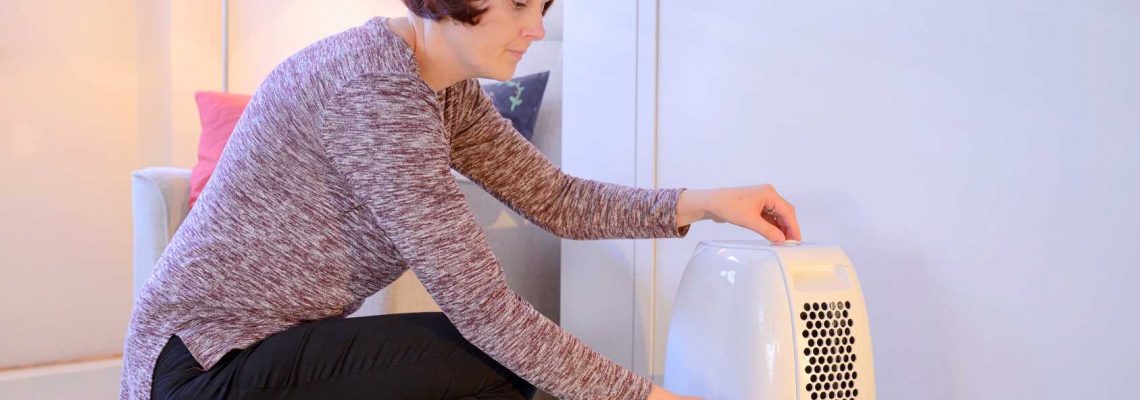Although it’s difficult to control how moist it is outside, it’s somewhat easy and inexpensive to control indoor humidity levels with a dehumidifier. In this quick and easy-to-read guide, homeowners will learn when and how to use a dehumidifier safely.
When It’s Time for Dehumidifier Use
Dehumidifiers are made for use in musty, damp rooms with a humidity level of 40-50%. If there’s more airborne humidity than that, mold growth may occur and if there’s less than that, there may be structural issues. A dehumidifier may be useful for those with asthma, colds, allergies, and other respiratory problems, as optimal humidity may alleviate some symptoms.
For homeowners in humid climates, it can help to put a dehumidifier in the basement, attic, and bathroom, particularly in the summertime. If there’s recently been a flood, a dehumidifier will help dry up the excess water. However, before using a dehumidifier in a flooded area, it’s best to consult a certified disaster restoration expert.
Maintaining and Caring for a Humidifier
There’s more to using a humidifier than setting it up and forgetting about it. It’s important to read the manual thoroughly and to follow the maker’s instructions carefully. Doing so will help users familiarize themselves with the humidifier’s requirements and features.
Clean and check the air filter and exhaust grilles regularly to allow the free flow of air and to prevent the buildup of dust. Don’t forget to frequently clean the water tank with soap and water to prevent the growth of bacteria and mold.
Tips for Safe Use
When using a dehumidifier, be sure to put it on a stable, level surface. Leave a minimum of ten inches of space behind the unit, and five feet or more in front. As with other appliances, keep dehumidifiers away from sources of heat and flame. Never plug a dehumidifier into an ungrounded outlet, and avoid extension cord use to minimize the risk of overheating and fire.
- Don’t use a dehumidifier in a larger-than-recommended space. Close doors and windows, as outside moisture may cause damage to the machine.
- Regularly vacuum the area in which the dehumidifier is used to prevent the spread of allergens.
- Turn the dehumidifier off when there’s no one home, or use the auto shutoff function.
- Empty the unit’s tank as required to prevent water damage and spills. Some dehumidifiers automatically shut off when the tank is filled or the air reaches the preset humidity level.
Finally, do not move units from cold spaces to warm rooms too soon – this prevents internal condensation. Wait ten minutes or more to turn the machine on after shutting it off, to minimize the risk of overheating.
Consult the Pros
While a dehumidifier is a great way to remove excess moisture from inside the home, it is important for homeowners to consult experts in water damage and disaster restoration in Springfield Missouri if there are serious issues. Extreme humidity, mold, mildew, and other problems are difficult for DIYers to resolve, but the specialists at PuroClean Certified Restoration are here to help. Call today to request more information or to schedule service.


